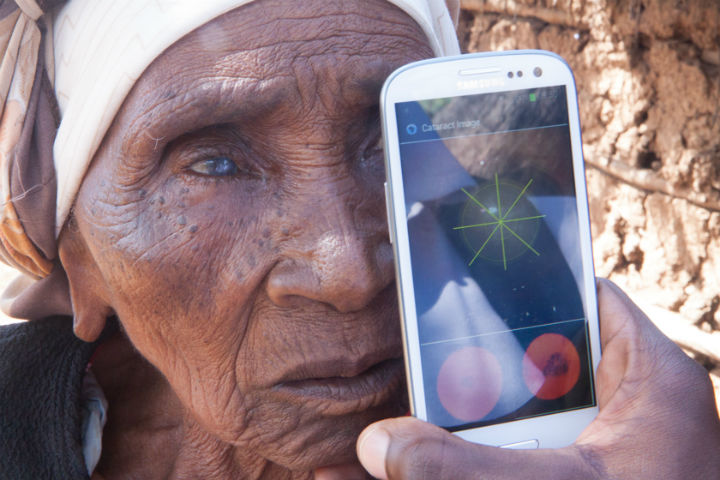An app developed by British ophthalmologists may soon change the lives of people living with poor vision but without access to care in remote communities.

Clinical trials of the Portable Eye Examination Kit (Peek), which uses a smartphone camera equipped with a 3-D printed adaptor and an acuity app “to conduct eye examinations,” proved the application was just as effective as traditional eye charts used in an optometrist’s office.
The findings of the trials, conducted on 233 people in Kenya by a team from the London School of Hygiene and Tropical Medicine, were published this week by JAMA Ophthalmology.
READ MORE: Battling blindness in developing countries with a smartphone app
“The main reason for most people not getting eye treatment is simply that they don’t access the services and that’s usually because the services are so far away from them or are unaffordable,” project leader Dr. Andrew Bastawrous told BBC.
“If we can detect people with visual impairment much earlier on them we have a much greater chance of increasing awareness and ensuring they have appropriate treatment.”
Instead of a static chart with letters that cascade from large to fine print, the acuity app displays a shrinking letter on a smartphone screen. Peek also utilizes the camera flash and autofocus function to allow eye doctors or trained careworkers to examine the retina.
- After controversial directive, Quebec now says anglophones have right to English health services
- Something’s fishy: 1 in 5 seafood products are mislabelled, study finds
- Why non-alcoholic beer is gaining steam at Oktoberfest: ‘Nobody will judge you’
- Recall expands for Nutrabolics vegan bars over undeclared milk
“The high image quality means you can view cataracts clearly enough for treatment classification, detect signs of glaucoma, macular degeneration, diabetic retinopathy and signs of nerve disease,” the team explains on the Peek Vision website.

Get weekly health news
Dr. Iain Livingstone, an ophthalmologist and senior fellow at the Glasgow Centre for Ophthalmic Research, was the acuity lead on the project and one of the founding partners of Peek Vision.
He spoke with Global News in February 2014, when the tests were still ongoing in Kenya.
Peek not only replaces the ophthalmoscope, but also advances upon it. Livingstone said the ophthalmoscope hasn’t changed all that much in the past 100 years.
“With smartphones, the optics are so sophisticated that they automatically focus to detail. What we’ve developed is an adaptor that reroutes the light such that the smartphone can visualize the human retina,” Livingstone said at the time.
It also means a smartphone costing a few hundred dollars, replaces tools and equipment worth thousands of dollars.
Better still is the little amount of training that is needed to use Peek, allowing health-care workers who are performing the duties of faraway doctors in rural communities to easily learn how to conduct tests.
“Because it’s connected to a phone it gives you the capacity to cascade pictures or footage of the retina and optic nerve, where there are cases of doubt as to what’s being seen,” Livingstone explained.
The development could be life-changing for those living with vision conditions or blindness, as well as their families.
“If you can’t see, not only are you disadvantaged but you’re entire family is disadvantaged,” Livingstone told Global News. “Because one person who’s blind means another person has to drop out of work to care for that person.”









Comments